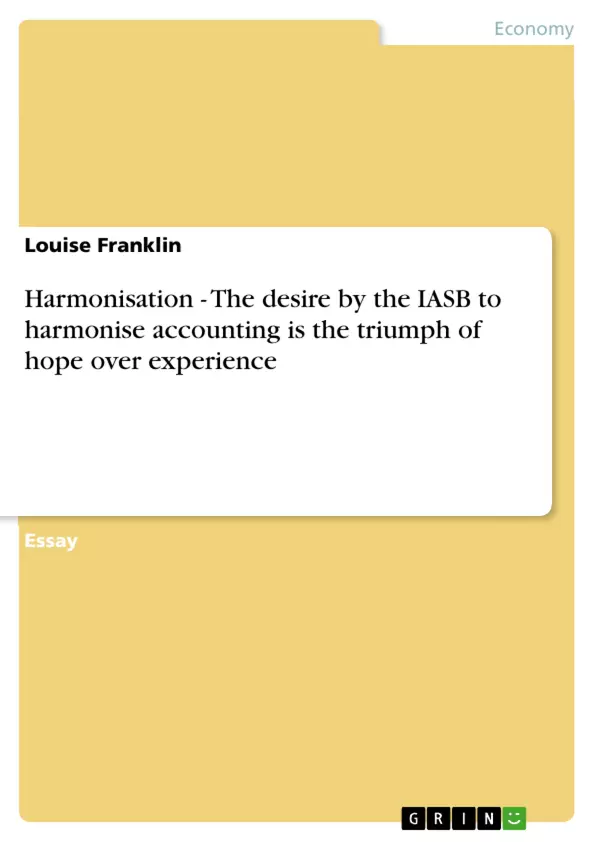On an international scale, harmonisation aims to update, align or even replace domestic standards with a high quality set of international accounting standards issued by the IASB. Reducing differences in financial reporting between various countries would benefit a wide variety of users in understanding and comparing accounts on a much larger geographical scale. However there are numerous obstacles discussed which can hinder the speed and completion of harmonisation.
Table of Contents
- Introduction
- Reasons for Harmonisation
- IASB's and EU's Approach to Harmonisation
- Obstacles to Harmonisation
- Developments Towards the IASB's Goal
- Current State of Harmonisation
- Conclusion
Objectives and Key Themes
This paper examines the process of harmonizing accounting practices on a global scale, specifically focusing on the efforts of the International Accounting Standards Board (IASB) to create a unified set of standards. The paper explores the motivations behind harmonization, the challenges it faces, and the ongoing developments in achieving global convergence.- The benefits of harmonizing accounting standards
- The challenges of harmonization, including cultural and legal differences
- The role of the IASB and the EU in promoting harmonization
- The impact of the US approach to accounting standards on global harmonization
- The potential consequences of a rules-based versus a principles-based approach to accounting
Chapter Summaries
- Introduction: This chapter defines harmonization as a process of increasing compatibility in accounting practices. The paper aims to explore the international efforts to create a globally recognized set of standards, highlighting the benefits and challenges of this endeavor.
- Reasons for Harmonisation: This chapter discusses the motivations behind harmonization, citing globalization, increased cross-border investments, and the need for standardized financial reporting to enable informed decision-making by investors. It also emphasizes the potential cost savings and improved transparency that come with a unified set of standards.
- IASB's and EU's Approach to Harmonisation: This chapter examines the roles of the IASB and the EU in promoting harmonization. It outlines the history of the IASB's efforts to create and promote high-quality accounting standards, highlighting the EU's commitment to adopting these standards for listed companies.
- Obstacles to Harmonisation: This chapter explores the challenges to achieving global harmonization, including differences in legal systems, cultural values, and accounting practices. It specifically examines the contrast between rules-based and principles-based approaches to accounting, discussing their respective advantages and disadvantages.
- Developments Towards the IASB's Goal: This chapter focuses on key developments in the harmonization process, such as the Norwalk Agreement between the IASB and FASB. It discusses the ongoing efforts to reduce differences between US GAAP and IFRS, and the potential for convergence toward a more principles-based approach.
Keywords
This paper explores the complex topic of harmonization in accounting, focusing on the key concepts of global convergence, the International Accounting Standards Board (IASB), IFRS, US GAAP, rules-based vs. principles-based accounting, and the challenges of achieving a unified set of accounting standards across diverse cultural and legal environments.
Fin de l'extrait de 11 pages
- haut de page
- Citation du texte
- Louise Franklin (Auteur), 2012, Harmonisation - The desire by the IASB to harmonise accounting is the triumph of hope over experience, Munich, GRIN Verlag, https://www.grin.com/document/202064
Lire l'ebook



